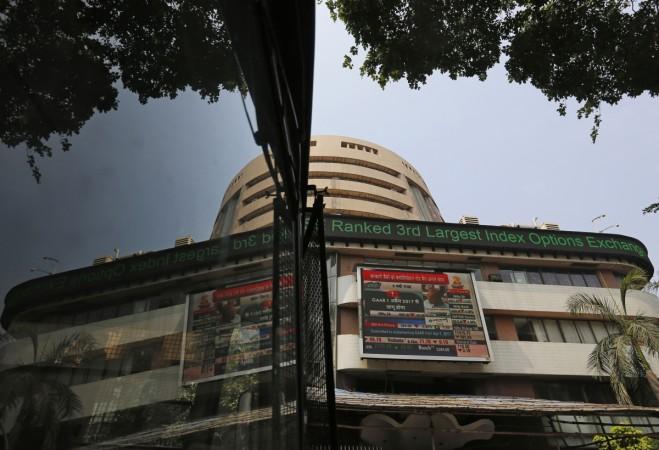The key Indian equity indices traded in the negative territory on Thursday tracking weakness in the Asian markets.
The subdued investor sentiments follow the US Federal Reserve's projection of at least two interest rate hikes in 2023, a year earlier than forecast in the March meeting.

Accordingly, the fears were triggered by US Fed statement on the eventual restart of liquidity tapering programme. The development assumes significance as it can lead foreign capital away from EMs such as India.
On Thursday, the Fed's statement sent shock waves in the Asian as well as domestic markets. The US Federal Reserve has projected at least two interest rate hikes in 2023, a year earlier than forecasted in the March meeting.
Around 11.55 a.m., Sensex was trading at 52,363.92, lower by 138.06 points or 0.26 per cent from its previous close of 52,501.98 points. It opened at 52,122.25 and has touched an intra-day high of 52,523.88 and a low of 52,099.72 points.
The Nifty on the National Stock Exchange was trading at 15,754.25, lower by 13.30 points or 0.084 per cent from its previous close.
"Indian markets open lower on Thursday due to weak Asian cues post US Feb statement on Wednesday night. However, they have recovered from a lower level as the impact of the US Fed statement could be limited on emerging markets including India," said Deepak Jasani, Head of Retail Research, HDFC Securities.
"Select midcaps are back in favour as traders interest remains high."
According to Gaurav Garg, Head of Research at CapitalVia Global Research: "In morning trades, Indian equity benchmarks remained in the red, reflecting losses in index heavyweights amid a mainly negative trend in global stocks."
"Sentiment remained downbeat as the second Covid wave had a negative impact on bank deposits and currency holdings among the public, according to an RBI report, indicating a large outflow of funds for pandemic-related medical expenses."
Global cues
Meanwhile, the global cues remain steady as the US Federal Reserve kept its benchmark interest rates unchanged at the record-low level of near zero, as the economic recovery continues amid growing concerns over inflation surge.
"Progress on vaccinations has reduced the spread of Covid-19 in the US. Amid this progress and strong policy support, indicators of economic activity and employment have strengthened," the Fed said in a statement issued on Wednesday after concluding its two-day policy meeting.
The Fed noted that the sectors most adversely affected by the pandemic "remain weak but have shown improvement".
With inflation having run persistently below the 2 per cent longer-run goal, the Federal Open Market Committee will aim to achieve inflation moderately above 2 per cent for some time so that inflation averages 2 per cent over time and longer-term inflation expectations remain well anchored at 2 per cent, the Fed reiterated, acknowledging that inflation has risen, "largely reflecting transitory factors."
The Fed's statement came days after the Labour Department reported that consumer prices rose 0.6 per cent in May, with a 12-month increase of 5.0 per cent, marking the largest 12-month increase since the period ending August 2008.
Inflation worries
Excluding the volatile food and energy categories, the so-called core consumer price index (CPI), the Fed's preferred inflation measure, rose 0.7 per cent in May, following a 0.9 per cent increase in April.
The index for all items excluding food and energy rose 3.8 per cent over the last 12 months, the largest increase since the period ending June 1992, according to the Labour Department.
The central bank also pledged to continue its asset purchase program at least at the current pace of $120 billionper month until the economic recovery makes "substantial further progress".
Despite that, economists and analysts had predicted that Fed officials could begin debate on tapering the Fed's monthly asset purchases as soon as this week's policy meeting, but the central bank is unlikely to publicly reveal that plan until August or September.








